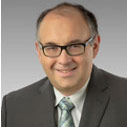To say that spectrum is critically important is an understatement. The relevant industries generate trillions of dollars in annual revenue.
Because spectrum is so important to the public welfare, regulations established by government agencies are necessary. In the United States, the rules that govern the radio spectrum are laid out in Title 47 of the Code of Federal Regulations. These rules include measures to protect environmental and other types of resources, and compliance with them is mandatory.
Standards are produced by standards-developing organizations (SDOs) and typically refer to the operation of a particular product. Compliance with standards for electromagnetic interference is mandatory, but compliance with standards such as Wi-Fi and LTE is entirely voluntary. However, the successful standards have created huge market opportunities, and compliance with these standards has become, in most cases, a de facto requirement for commercial success. Prior to selling equipment, equipment manufacturers must receive certification that their devices comply with government (in the United States, FCC) regulations. Thus, these devices undergo[KZ1] [KZ2] interoperability testing, as established by the relevant standard. Devices are fielded only after they have passed these tests. Standards may include performance criteria that incorporate relevant regulations, and in these cases, compliance with the standard can mean compliance with the regulations.
Currently, the FCC first “allocates” a band of frequencies, specifying power limits and, in some cases, determining the specific service to be used. There are several different licensing schemes: (1) exclusive, usually for a limited geographic area; (2) non-exclusive; (3) unlicensed; and (4) special, meaning a site-based license. For example, cellular service providers have exclusive licenses. Wi-Fi is using unlicensed and, more recently, non-exclusively licensed spectrum, or licensed spectrum that is otherwise unoccupied. Unlicensed devices must accept whatever interference they receive and must not cause harmful interference. Exclusive licenses can be obtained primarily through competitive bidding and guarantee license holders the right to call federal marshals to tear down transmitters that cause “harmful interference” to the license holder.
The central technical concept is what constitutes “unacceptable interference.” Interference to a receiver depends mainly on the distance from that receiver to the unwanted transmitter compared to the distance to the intended transmitter, and the power levels of these transmitters. There is no such thing as interference-free wireless transmission, or rather reception. Every receiver must tolerate some level of interference.
For a long time, spectrum was considered a resource, similar to land or oil, albeit “infinitely renewable,” with several dimensions—time, frequency, and location. The licensing system is effectively parceling spectrum in frequency, in location, and, more recently, in time. The problem with this is that signals can overlap in all three of these dimensions and still be non-interfering, using techniques such as spread-spectrum and ultra-wide band (UWB). Since two people cannot plough the same plot of land at the same time, the resource analogy has limitations.
Therefore, the technology evolution not only leads to new regulations and standards but also improves our understanding of “spectrum” and “interference,” the very concepts with which these regulations and standards operate.
 Todor Cooklev is Harris Professor of Wireless Communication and Applied Research at Purdue University in Fort Wayne, Indiana. He has contributed to the development of a number of communications standards, including Bluetooth, DSL, Wi-Fi, cellular, and military radio systems, serving at times in leadership positions in standardization organizations such as ITU-T, IEEE 802, and 3GPP. His research interests include most aspects of wireless standards. Dr. Cooklev has contributed to more than 100 publications.
Todor Cooklev is Harris Professor of Wireless Communication and Applied Research at Purdue University in Fort Wayne, Indiana. He has contributed to the development of a number of communications standards, including Bluetooth, DSL, Wi-Fi, cellular, and military radio systems, serving at times in leadership positions in standardization organizations such as ITU-T, IEEE 802, and 3GPP. His research interests include most aspects of wireless standards. Dr. Cooklev has contributed to more than 100 publications.
